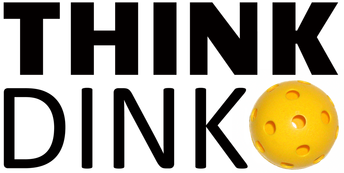
“A really good rule of thumb is that if you have to hit up on the ball, hit it soft into the kitchen. If you are able to hit down on the ball, it is ok to try and hit it hard.”
This advice is so simple that it’s easy to disregard its value.
Most players begin pickleball thinking they must master long drives, hard overhead smashes, and the like. They start warm-ups from the baselines, serving and hitting long shots back and forth. They almost never practice drop shots into the kitchen and they only practice dinking for a short while.
If you watch pickleball videos of high-level games (and I recommend you do – in fact, check out Jeff’s video channel on YouTube), you won’t see a lot of long shots. After the serve, the receivers generally return the ball long because of the double-bounce rule, but after that, the servers have made it to the non-volley zone line and the soft, short game begins.
So how do you improve your short, soft dinking game?
The goal is to become good at returning the dink low and soft over the net, at an angle to your opponent’s backhand, if possible, until that moment when your opponent’s shot comes at you high enough that you can volley it downward. Then you break out of the dink with a hard, fast, downward hit they don’t expect and hopefully can’t return.
You’ll only learn to do this with practice. Get out to the courts with a group of people who want to work on improving their short game. Dink over and over until you are good at it and until you’re also good at breaking out of it. Don’t underestimate the power of the soft game. You’ll also want to practice drop shots from all over the court, since you’re not always going to be at either the baseline or the NVZ line —sometimes you’ll get caught in mid-court and a drop shot or drop volley will be just the thing to get you up to the net.
Jeff goes on to say that “choosing a shot is 50% of pickleball.” I agree, and I would add that the other 50% is not making mistakes. Here’s my list of the most common mistakes made by novice and/or intermediate players:
- Avoiding the soft game.
- Thinking you can smash a winner past your opponent.
- Hitting the ball hard from low to high.
- Hitting a soft shot too high over the net.
- Hitting where your opponent is standing, especially to the forehand.
- Going for a fancy shot when their success rate with that shot is less than 75%.
Again, get out there and practice hitting the ball low over the net. Try to hit away from your opponent and to the backhand side whenever possible, as most players’ backhands are weaker than their forehand strokes. Don’t get fancy. Avoid errors. Sounds easy, and it will be — with practice.

 RSS Feed
RSS Feed